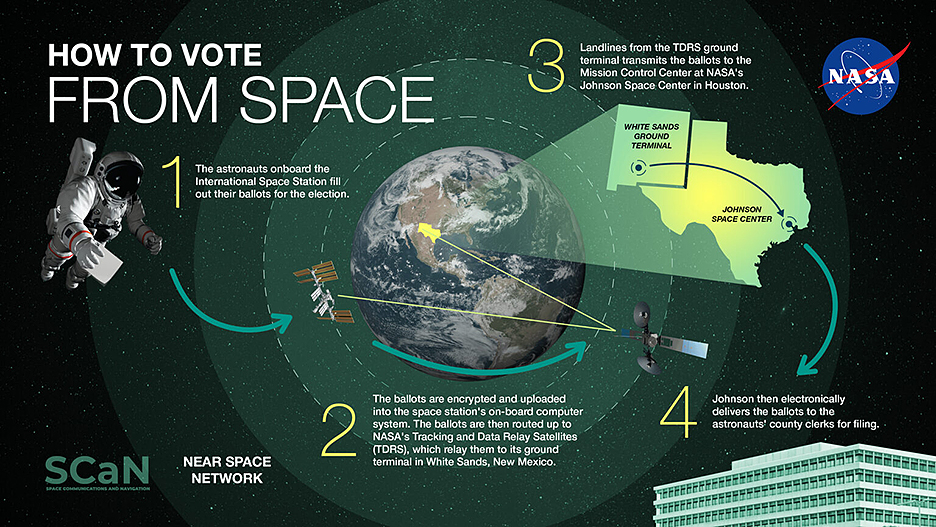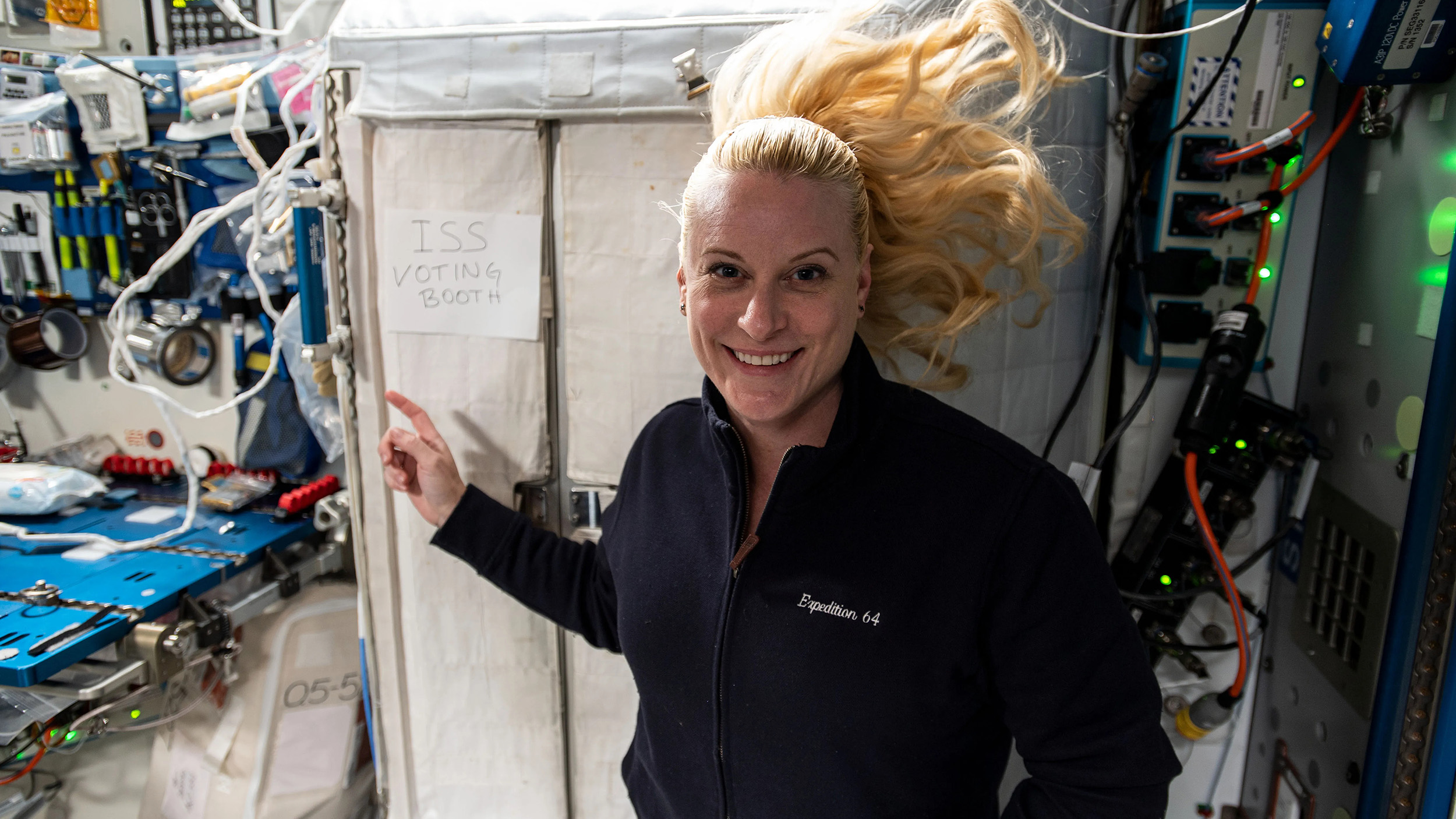Major elections take place on Tuesday here in the U.S., and the Presidential race, in particular, will be decided by razor-thin margins in a handful of battleground states. So, in a democratic country where every vote counts, how do people without their feet on Terra Firma make their voices heard?
NASA astronauts aboard the International Space Station (ISS) face this issue every time a general election rolls around. Luckily, it’s not as thorny a problem as you’d think. It all comes down to the same technology that makes communication with space-bound astronauts possible in the first place.

Loral O’Hara, left, and Jasmin Moghbeli voted in state elections from the ISS earlier this year. Photo: NASA
According to NASA, the process starts at home. Just like any other American voter wanting to cast an absentee ballot, astronauts fill out a Federal Post Card Application. With absentee voter status approved, the astronauts download an electronic ballot while floating in zero-G.
Encrypted process
Then NASA’s Space Communication and Navigation (SCaN) system sends the information through data relay satellites to a ground antenna in Las Cruces, New Mexico. From there, the vote is transmitted to the county clerk in the astronaut’s home state. The entire process is encrypted from end to end. Only the astronaut and the clerk know how the vote was cast.
That may sound like a complex chain of events, but thanks to the physics of space travel, it’s considerably faster, cheaper, and less complex than shipping paper ballots on an 800km trip to the ISS and back.

Graphic: NASA
The system has been in place since 1997 when Texas (a state many astronauts call home, thanks to NASA’s heavy presence there) passed legislation allowing for electronic voting. The bill was largely the result of astronaut John Blaha’s desire to vote in the 1996 general election from the Russian Mir Space Station. He didn’t get his wish in time, but after the legislation passed, astronaut David Wolf was able to vote in Houston, Texas’ 1997 local elections.
Two-time space voter
Kate Rubins is the only astronaut to vote from space twice, in the 2016 and 2020 general elections. Hopefully, given NASA’s increased commitment to human space travel, she won’t be the last.
As for American citizens wanting to vote from far-flung places like Antarctica? Surprisingly, it’s back to good old-fashioned paper ballots in most cases. Just like with astronauts, if you’re going to be on an Antarctic base during voting season, you need to think ahead and request a vote-by-mail ballot. Once that’s done, the process is simple and reliable. As this blogger points out, flat mail is reasonably consistent in Antarctica. He even received election fliers from various campaigns!






